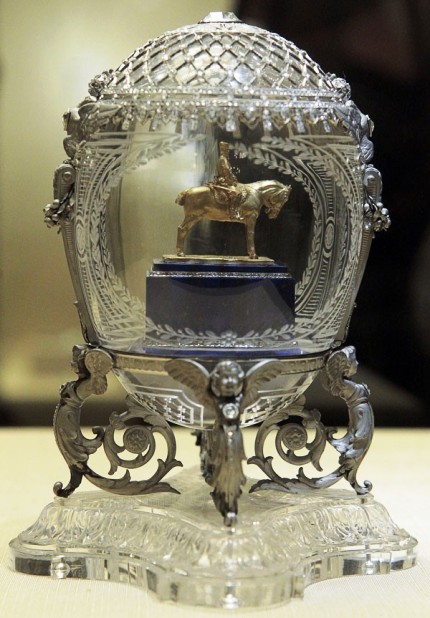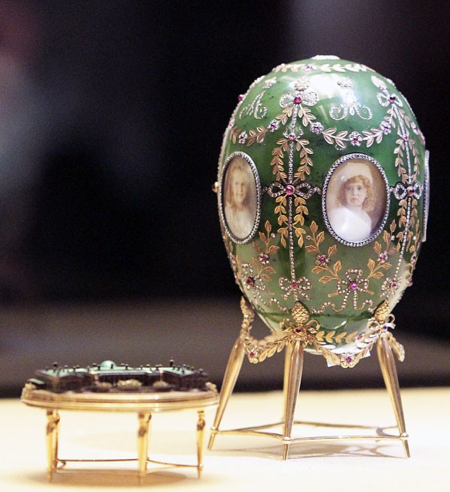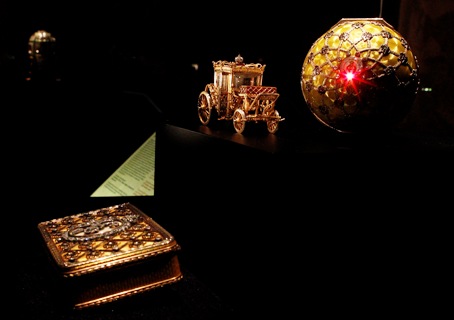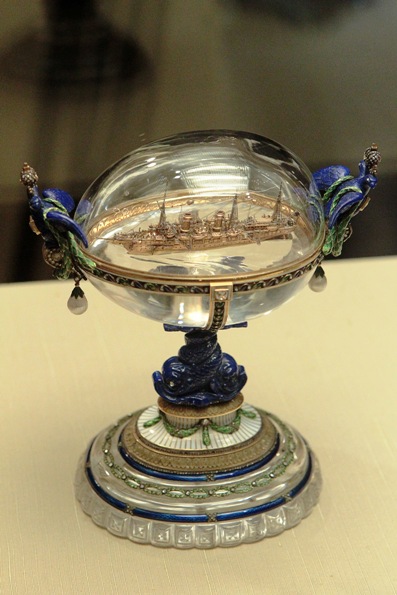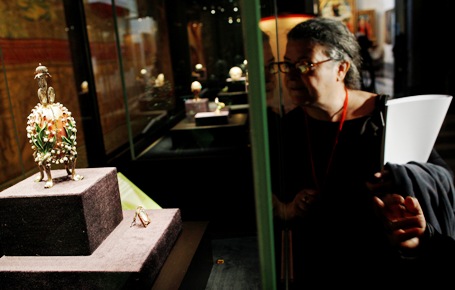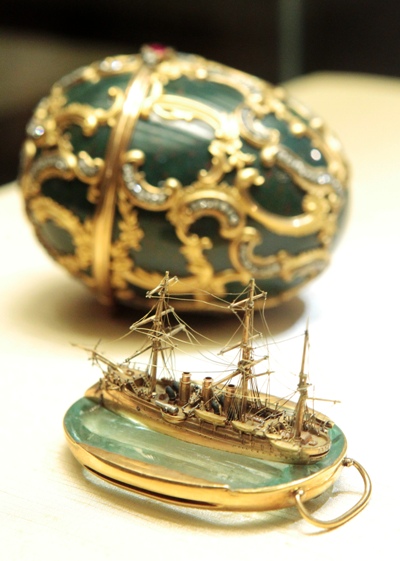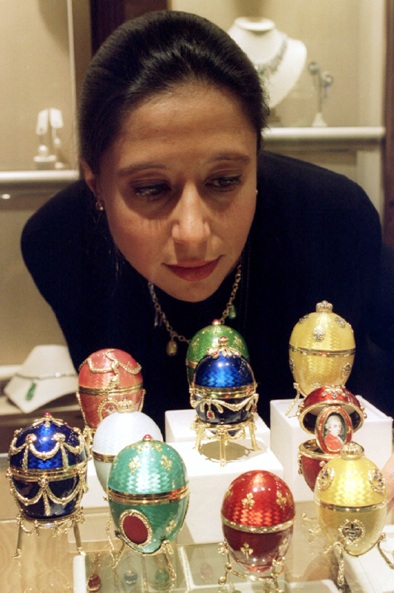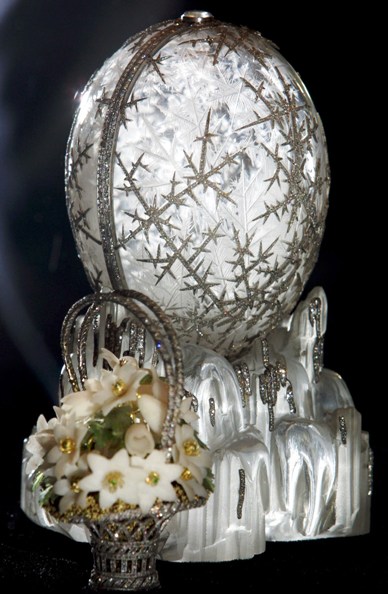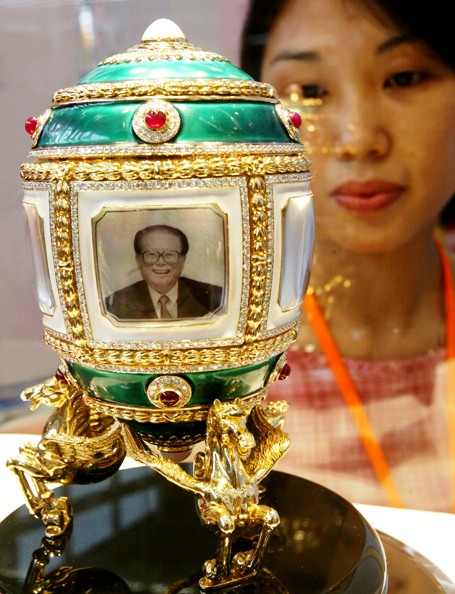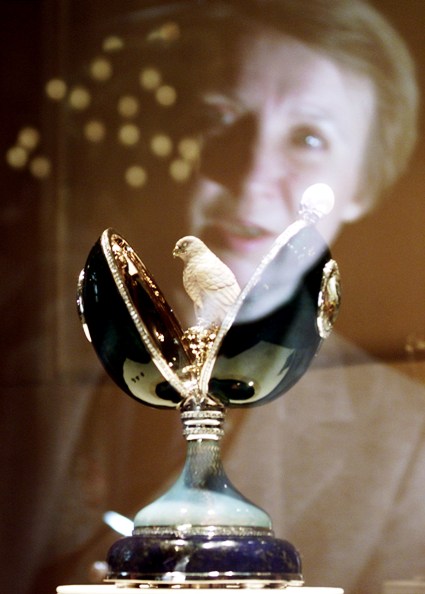 | « Back to article | Print this article |
Amazing 'eggs' worth over millions of dollars
It is the 166th birthday of Russian jeweller Peter Carl Faberge today.
The latter was famous for designing the precious and colourful Easter eggs (also known as Faberge Eggs).
A Faberge egg is any one of the thousands of jewelled eggs made by the House of Faberge from 1885 to 1917.
The most famous eggs produced by the House were the larger ones made for Alexander III and Nicholas II of Russia.
The eggs are made of precious metals or hard stones decorated with combinations of enamel and gem stones.
We present here some colourful creations of Faberge. Read on. . .
The Resurrection Egg
The Resurrection egg is a jewelled rock crystal Easter egg made by Michael Perchin under the supervision of Faberge before 1899.
It has been postulated that the Resurrection egg is the missing surprise from the Renaissance egg.
The egg depicts Jesus rising from his tomb, and is the only Faberge egg to explicitly reference the Easter story.
In 2004 it was sold as part of Forbes Collection to Viktor Vekselberg.
Vekselberg purchased some nine Imperial eggs, as part of the collection, for almost $100 million.
Click NEXT to read about more Faberge eggs. . .
Amazing 'eggs' worth over millions of dollars
Alexander III Monument Egg
The egg is carved out of rock-quartz crystal, engraved with two tied laurel leaf sprays, the upper half cloaked with platinum trelliswork and a tasseled fringe, with two consoles shaped as double-headed eagles set with rose-cut diamonds.
A large diamond engraved with the year '1910' surmounts the egg, set in band of small roses.
The two platinum double-headed eagles on the sides of the egg have diamond crowns.
The surface of the egg between the eagles is engraved with branching patterns, adjoined at the bottom.
The lower part of the egg serves as a platform for a gold model of a statue of Tsar Alexander III on horseback, standing on a nephrite base embellished with two rose-cut diamond bands, engraved with Faberges signature, supported by cast platinum cherubs coiled into position on a base of crystal.
It is currently held in the Kremlin Armoury Museum in Moscow.
The egg was given by Tsar Nicholas II to his mother Maria Feodorovna at Easter 1910 and cost 14,700 rubles.
Click NEXT to read further. . .Amazing 'eggs' worth over millions of dollars
Alexander Palace Egg
This nephrite egg is adorned with five miniature portraits of the children of Tsar Nicholas II and Alexandra Fedorovna, and contains a replica of the Alexander Palace at Tsarskoe Selo.
The upper and lower sections of the egg are set with triangular diamonds bearing the initials AF (Alexandra Fedorovna) and the date 1908.
An inlaid wreath of golden leaves surrounds each diamond, and flowers composed of rubies and diamonds.
The remainder of the egg's surface is divided by five vertical lines, studded with diamonds and connected with one another by gold garlands inlaid with rose-cut diamond and ruby flowers.
Egg: gold, portrait diamonds, rose-cut diamonds, rubies, nephrite, watercolor on ivory.
Miniature palace: tinted gold, silver, varicolored gold, rock crystal, light green enamel, wood, glass
Dimensions
Height of egg: 110 mm. (4 5/16 in.) Diameter of egg: 68 mm. (2 11/16 in.) Miniature palace: 30 mm. (1 3/16 in.) x 65 mm. (2 9/16 in.)
Click NEXT to read further. . .
Owner: Armoury Museum of the Kremlin, Moscow
The egg was presented to Alexandra Fedorovna at Easter in 1908 as a gift from Nicholas II at a cost of 12,300 rubles and housed in Alexandra Fedorovna's Mauve Sitting Room in the Alexander Palace from 1913-1916.
The stand is modern, having been made in 1989 at the Moscow experimental jewellery factory.
Click NEXT to read on. . .
Amazing 'eggs' worth over millions of dollars
Britain's Queen Elizabeth and Catherine, the Duchess of Cambridge, view a glass cabinet containing part of the Royal Faberge collection, at Buckingham Palace in central London.
Click NEXT to read further. . .
Amazing 'eggs' worth over millions of dollars
Kelch Chanticleer Egg
This is a jewelled enameled Easter egg made by Michael Perchin under the supervision of the Russian jeweller Peter Carl Faberge in 1904, for the Russian industrialist Alexander Ferdinandovich Kelch, who presented the egg to his wife, Barbara Kelch-Bazanova.
Upon the hour, a diamond set cockerel pops up from the top of the egg, flaps its wings four times, nods his head three times, crowing all the while during this routine.
This lasts fifteen seconds, before the clock strikes the hour on a bell.
The Kelch Chanticleer egg is, together with the 1906 Moscow Kremlin egg, one of Faberge's largest Imperial Easter eggs.
It was long believed to be an Imperial egg and was purchased as such from A La Vieille Russie by Malcolm Forbes in 1966.
In 2004 it was sold as part of the Forbes Collection to Viktor Vekselberg. Vekselberg purchased some nine Imperial eggs from the collection, for almost $100 million.
Click NEXT to read further. . .
Amazing 'eggs' worth over millions of dollars
The Imperial Cornation Egg
The Imperial Coronation Egg was made under the supervision of the Russian jeweller Peter Carl Faberge in 1897 by Faberge ateliers, Mikhail Perkhin and Henrik Wigstrom.
The egg was made to commemorate the 1896 Coronation of Czar Nicholas II.
The valuable piece of Russian history was then presented as a gift to his spouse, the Tsaritsa, Empress Alexandra Fyodorovna.
Fitted inside a velvet-lined compartment is a precise replica, less than four inches long, of the Eighteenth-century Imperial coach that carried the Tsarina Alexandra to her coronation at Moscow's Uspensky Cathedral.
The red colour of the original coach was recreated using strawberry coloured enamel and the blue upholstery of the interior was also reproduced in enamels.
The coach is surmounted by the Imperial Crown in rose diamonds and six double-headed eagles on the roof; it is fitted with engraved rock crystal windows and platinum tyres decorated with a diamond-set trellis in gold and an Imperial eagle in diamonds at either door.
The miniature is complete with moving wheels, opening doors, actual C-spring shock absorbers and a tiny folding step-stair.
In March 1979, the egg was sold to Malcolm Forbes for $2.16 million along with the Lilies of the Valley Faberge Egg.
Click NEXT to read further. . .
Amazing 'eggs' worth over millions of dollars
The Standard Yacht Egg
It was presented by Nicolas II as an Easter gift to his wife, the Czarina Alexandra Fyodorovna.
It is currently held in the Kremlin Armoury Museum in Moscow.
The Standart Yacht Leaf Egg is a transparent hollowed-out rock crystal egg, mounted horizontally, with a gold band with inlaid leaves of green enamel and small diamonds marking the separation point between upper and lower halves, which bears the inscription "Standart 1909".
It is on an ornate stand with classical overtones, made from gold, pearls, and enamel.
The surprise is a golden replica of the Imperial Yacht, the Standart Yacht, made of gold and platinum, and coated in vitreous enamel.
The model rests on a carved bed of crystal representing the ocean, but can be removed from the egg.
This egg was never sold and is one of the 10 Imperial Easter Eggs kept in Kremlin.
Click NEXT to read further. . .
Amazing 'eggs' worth over millions of dollars
Lilies of the Valley Egg
It was presented on April 5 to Tzar Nicholas II, and was used as a gift to the Tsaritsa, Empress Alexandra Fyodorovna. The egg is part of the Vekselberg Collection.
The egg is covered in pearls and topped with pink enamel.
The egg is supported by cabriole legs of green-gold leaves with rose diamond dewdrops.
The gold-stemmed lilies have green enameled leaves and pearl flowers made of gold, rubies, pearls.
The Lilies of the Valley Egg was one of nine eggs sold by Antikvariat to Emanuel Snowman of Wartski around 1927.
Like the Coronation Egg, it too was then sold to Charles Parson in 1934 and bought back by Wartski.
It was then sold by Wartski to one Hirst and bought back yet again.
In 1979, Kenneth Snowman of Wartski sold the egg to Malcolm Forbes together with the Coronation Egg for a total of $2,160,000.
Click NEXT to read further. . .
Amazing 'eggs' worth over millions of dollars
The Memory of Azov Egg
The Memory of Azov Egg (or the Azova Egg) is a jewelled Easter egg made in 1891 for Tsar Alexander III of Russia.
It was presented by Alexander III as an Easter gift to his wife, the Czarina Maria Feodorovna.
It is currently held in the Kremlin Armoury Museum in Moscow, and it is one of the few Faberge eggs that has never left Russia.
Carved from a solid piece of heliotrope jasper, also known as bloodstone, the Memory of Azov Egg is decorated in the Louis XV style with a superimposed gold pattern of rococo scrolls with brilliant diamonds and chased gold flowers.
The broad flute gold bezel is set with a drop ruby and two diamonds that complete the clasp.
The egg's interior is lined with green velvet.
The surprise contained within is a miniature replica of the Imperial Russian Navy cruiser Pamiat Azova (Memory of Azov), executed in red and yellow gold and platinum with small diamonds for windows, set on a piece of aquamarine representing the water.
Click NEXT to read further. . .
Amazing 'eggs' worth over millions of dollars
Faberge Mosaic Egg
The Mosaic Egg was commissioned by Tsar Nicholas II and presented to his wife, Empress Alexandra Fedorovna, for Easter 1914.
It was later confiscated, along with much of the family's belongings, by the provisional government in 1917 during the Russian Revolution.
In 1933 the egg was sold by the Antikvariat to an unknown buyer for 5,000 roubles.
On May 22, 1933 it was purchased from Cameo Corner, London by King George V for 250 pounds.
The Egg was crafted by Albert Holmstrom under the supervision of Peter Carl Faberge and is made of yellow gold, platinum, brilliant diamonds, rose-cut diamonds, ruby, emerald, topaz, sapphire, garnet, half-pearls, moonstone, white enamel and opaque pink enamel.
It consists of a series of yellow gold belts which are pave-set with diamonds and a variety of gems in a floral pattern, providing a look of petit point tapestry work.
Click NEXT to read further. . .
Amazing 'eggs' worth over millions of dollars
Celine Gilg looks over a display of six jewel-encrusted Faberge Easter eggs, worth more than $100,000, at Cellini Jewelers in New York City.
Click NEXT to read further. . .
Amazing 'eggs' worth over millions of dollars
Faberge Winter Egg
Made in 1913, the Winter Egg is one of a series of 52 Russian jewelled Easter eggs and was designed by Alma Pihl, a designer who worked for Russian jeweller Peter Carl Faberge.
The Tsar Nicholas II gifted this to his mother Tsarina Maria Feodorovna.
The price in 1913 was 24,700 rubels, the most expensive Easter egg ever made.
The egg sold for $9.6 million in an auction at Christie's in New York City in 2002.
Click NEXT to read further. . .
Amazing 'eggs' worth over millions of dollars
This file photo shows a Chinese woman lookin at a Faberge egg bearing the image of Chinese President Jiang Zemin at a jewelry show in the southern city of Guangzhou.
Click NEXT to read further. . .
Amazing 'eggs' worth over millions of dollars
A museum employee looks at Faberge 'Falcon-Egg' created in 2000 by workmaster Victor Mayer on display at a jewellery exhibition in Moscow.

